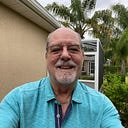Member-only story
Measuring the Quantum Foam
Introduction
Quantum foam or spacetime foam is the quantum fluctuation of spacetime on very small scales due to quantum mechanics. The idea was devised by John Wheeler in 1955.
Very little is known about the quantum foam or fluctuations, or vacuum energy. We don’t even have a decent name for it. It is thought that it is related to the source of dark energy, and other important phenomena in the universe. Many physicists think that learning about that will bring about the next big advances in physics. In this article, I will show you three ways to measure it. They are:
- Measuring the statistics of of the electron or photon after scattering through an aperture and absorption by atoms to measure the noise in the quantum foam.
- The Casimir effect measurements
- Quantum gravity measurements
Electron or Photon Scattering Measurements
Let us consider an electron in a cathode ray tube being guided in its path by electric and magnetic fields to a phosphor that lights up upon absorbing that electron. What is really happening? From quantum mechanics, the electron in free space is a wave, and it diffracts from edges, and interferes with other electron waves. The double slit experiment illustrates this wonderfully.
